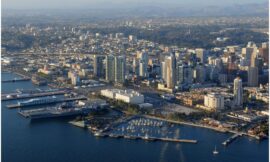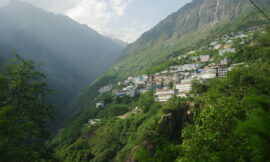The Citadel of Tripoli, Lebanon, stands as a majestic testament to the city’s rich history, strategic importance, and architectural splendor. Perched atop a hill overlooking the bustling streets and bustling markets of Tripoli, this ancient fortress has witnessed centuries of triumphs, conflicts, and cultural exchange, serving as a symbol of resilience and endurance for the people of Lebanon.
Dating back to the medieval period, the Citadel of Tripoli is believed to have been constructed by the Crusaders during the 12th century, although its origins can be traced back even further to earlier civilizations that inhabited the region. The fortress played a crucial role in the defense of the city, serving as a military stronghold and administrative center for the Crusader rulers who sought to maintain control over the strategic port of Tripoli.
The Citadel’s strategic location atop a hill provided a commanding view of the surrounding landscape, allowing defenders to monitor approaching threats and coordinate their defenses accordingly. Its sturdy walls, imposing towers, and fortified gates served as a formidable barrier against would-be invaders, earning the fortress a reputation as one of the most formidable strongholds in the Levant.
Over the centuries, the Citadel of Tripoli changed hands multiple times, falling under the control of various empires and dynasties, including the Crusaders, Mamluks, and Ottomans. Each successive ruler left their mark on the fortress, adding new structures, fortifications, and architectural elements that reflected their own cultural influences and military strategies.
One of the most iconic landmarks within the Citadel is the Tower of Lions, a massive cylindrical tower adorned with sculpted lion heads that once served as a symbol of strength and power. The tower’s intricate carvings, ornate arches, and imposing presence are a testament to the craftsmanship and ingenuity of the medieval architects who designed and built it.
Adjacent to the Tower of Lions stands the Great Mosque of Tripoli, a magnificent example of Islamic architecture dating back to the Mamluk period. With its towering minaret, intricately tiled dome, and ornate courtyard, the mosque is a testament to the city’s rich cultural heritage and religious diversity.
As visitors explore the Citadel of Tripoli, they encounter a wealth of archaeological treasures, including ancient tombs, Byzantine churches, and Ottoman-era palaces. Each structure tells a story of the civilizations that once thrived within the walls of the fortress, from the early Phoenician settlers to the Arab conquerors who shaped the course of history in the region.
Beyond its historical and archaeological significance, the Citadel of Tripoli also serves as a cultural hub and gathering place for locals and tourists alike. Throughout the year, the fortress hosts a variety of events, festivals, and performances that celebrate Lebanon’s rich cultural heritage and promote intercultural dialogue and understanding.
Moreover, the Citadel of Tripoli offers visitors a peaceful retreat from the hustle and bustle of city life, with its lush gardens, shaded pathways, and tranquil courtyards providing a welcome respite from the heat and noise of urban Tripoli. From its vantage point atop the hill, the fortress offers breathtaking views of the city below, with its bustling markets, bustling streets, and iconic landmarks stretching out to the horizon.
In conclusion, the Citadel of Tripoli is a treasure trove of history, culture, and natural beauty that captures the imagination and inspires wonder. From its ancient ruins and archaeological treasures to its stunning vistas and cultural events, the fortress stands as a proud symbol of Lebanon’s rich heritage and enduring legacy.



